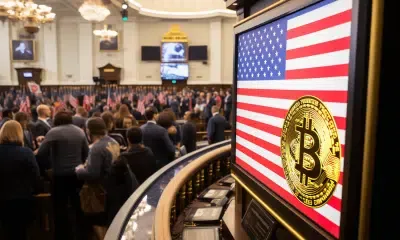
Solana: Redefining Blockchain Speed and Possibilities
What is Solana, and why is it gaining so much attention in crypto? Solana quickly grabbed attention in the blockchain world, setting itself apart with its focus on sheer speed and the ability to grow. Anatoly Yakovenko and Raj Gokal from Solana Labs introduced this open-source system in 2020. They wanted to knock down major roadblocks that kept blockchain from being used everywhere, offering a fresh take on how dApps and online markets could work.
The whole idea behind Solana revolves around achieving incredibly fast transactions, strong security, and an infrastructure that can handle more users. What truly makes it different is Proof of History (PoH). Think of PoH not exactly as a way to agree on things, but more like a digital timekeeper that puts a timestamp on every transaction before it even gets to the Proof of Stake (PoS) system where everyone agrees. Getting transactions in order ahead of time makes a huge difference: it sharply reduces how long validators take to confirm the order of things, which naturally leads to much quicker processing than older blockchains.
Guiding Solana’s growth, the Solana Foundation aims to create what they call “the most censorship-resistant network in the world.” To get there, they’re focused on nurturing a lively group of open-source contributors, growing the number of transaction validators, and making it easier for people to stake their coins. Yakovenko first imagined a decentralized alternative to regular financial markets. That idea grew to include the fast-expanding areas of DeFi, NFTs, and smooth crypto payments. The big picture is to give developers the tools to create dApps faster and more effectively than ever before, stretching what blockchain technology can do.
Solana’s very structure tackles the tough “blockchain trilemma”—that tricky balance of making a system grow, stay secure, and remain decentralized all at once. It tries to fix problems like slow transaction times and high fees that bog down older blockchains, particularly when lots of people are using them. With goals of handling tens of thousands of transactions every second and keeping fees down to tiny parts of a cent, Solana offers a practical option for apps that need rapid processing and small payments, things that just don’t make sense financially on other systems.
Solana’s Inner Workings: Smart Design and Consensus
A set of eight key technologies working together is what gives Solana its impressive speed. Besides the crucial Proof of History (PoH), you have Tower BFT, which is a version of Practical Byzantine Fault Tolerance specially tweaked for PoH. Then there’s Turbine, a system for spreading blocks that breaks them into tinier pieces so they travel across the network quicker. Gulf Stream also plays a part by moving transaction caching closer to the network’s users, letting validators get a head start on processing them.
The toolkit also features Sealevel, which lets Solana run tens of thousands of smart contracts at the same time—quite different from many other platforms that handle them one by one. Pipelining makes transaction checking more efficient by setting up a kind of production line for the different validation steps. Cloudbreak provides an accounts database that can grow sideways to handle more information, and Archivers help store the blockchain’s ledger across many machines.
How Solana reaches agreement—its consensus—blends PoH with Proof of Stake (PoS) effectively. PoH creates a trustworthy, time-ordered record of everything that happens, working like a shared clock for everyone. This lets the PoS system, where people who’ve staked SOL coins get chosen to validate, concentrate on checking transactions that are already in order, instead of wasting effort figuring out the sequence. This teamwork really cuts down the time needed to agree and makes the whole network run better.
On Solana, smart contracts are called “programs” and are mostly built using Rust, C, or C++. One important detail is that they don’t hold onto data themselves; the programs have the instructions, and the actual information lives in separate accounts, which helps Solana run fast. For developers, the Anchor framework is a huge help, making it easier to write programs in Rust by hiding some of the tricky parts and cutting down on repetitive code. Plus, the Solana Program Library (SPL) offers a collection of ready-to-use, checked programs for everyday tasks like making new tokens.
Solana in Action: Speed, Certainty, and Price
People often talk about Solana hitting a theoretical top speed of 65,000 transactions per second (TPS), and some official documents even hint at more if everything is perfect. But in day-to-day use, the actual speed for transactions that aren’t just network chatter usually lands between 2,000 and 4,000 TPS. This number can swing depending on how busy the network is and how complicated the transactions are. As an example, when meme coins got really popular in April 2024, Solana reached a daily high average of 1,504 TPS. It’s important to remember there’s a difference between what users do and the “vote transactions” that are just the network talking to itself.
When a transaction on Solana becomes permanent—what they call finality—it’s a bit more involved than it sounds. Blocks get created quickly, around 400 milliseconds. But for a transaction to be truly unchangeable, it goes through a few stages. It can be processed almost right away. Then it gets confirmed, which means most validators have approved it, usually in a second or two. Finally, it’s finalized, giving the strongest assurance, which generally takes about 10 to 20 seconds.
Many people praise Solana for its incredibly cheap transaction fees, which usually sit somewhere between $0.00025 and $0.0028. The exact cost can change with how the market is doing and how busy the network gets. These low prices are possible because of how well Solana is built and how many transactions it can handle.
The World of Solana: Growing Fast with DApps and New Ideas
The collection of projects and apps on Solana has grown incredibly fast, turning into a lively center for DeFi, NFTs, Web3 games, and DePIN (Decentralized Physical Infrastructure Networks). By early 2025, Solana frequently handled a large chunk of the trading on decentralized exchanges (DEXs), with Jupiter, Raydium, and Orca being some of the most popular. For NFTs, marketplaces such as Magic Eden and Tensor have seen billions of dollars in trades, helped by Solana’s cheap fees for creating (minting) and trading them.
Solana is also gaining a lot of ground in Web3 gaming; games like Star Atlas and Genopets use its fast performance. What might be most unique is how Solana has become a top choice for DePIN projects. Think of Helium, which is building a decentralized wireless network, or Render Network, offering shared computer graphics power—both gain a lot from Solana’s ability to scale. Payments are another area where Solana shines: Solana Pay lets businesses take crypto payments with almost no fees, and moving stablecoins around on Solana is becoming very popular because it’s so efficient.
Lots of developers are jumping on board, which is speeding up this growth; word is that Solana is bringing in new coders faster than other big blockchains. Smart team-ups with big names like Google Cloud (they even run a Solana validator) and Shopify (which is adding Solana Pay) also help. On top of that, large investment companies like ATW Partners are putting money in, and there’s talk about possible Solana ETFs, all of which strengthens Solana’s place in the market and makes it look more trustworthy.
SOL: The Coin That Powers Solana and Its Market Journey
The SOL coin is absolutely essential to how the Solana network operates. It has several key jobs: people use it to pay for transaction charges, they can stake it to help the network agree on transactions, and holding SOL lets them have a say in how the network is run. By April 2025, there were about 598.58 million SOL coins in total, and around 516.28 million of those were actually being used or traded.
Solana’s system means new SOL coins are created over time as rewards for those who validate transactions and those who stake their coins. It started with an 8% increase in supply each year, but this rate is set to go down by 15% annually until it settles at a steady 1.5% for the long haul. To balance this out, half of the transaction fees are destroyed (though a recent change means 100% of priority fees now go to validators). This removal of coins from the system pushes back against inflation. When people stake their SOL, they don’t just earn rewards; they also play a vital part in keeping the network safe.
Since it first appeared, SOL’s price on the market has seen big jumps and sharp drops. It once hit a peak price of about $293 to $295. This price movement shows both how well the Solana world is doing and how the entire crypto market tends to swing. In May 2025, the total value of all SOL coins was somewhere between $91 billion and $92.45 billion, placing it high up in the list of major cryptocurrencies.
Facing the Storm: Solana’s Hurdles and How It’s Getting Stronger
Even with all it can do, Solana has hit some rough patches. The network has gone down or been unstable at times, especially when it was newer, which made people wonder if it was dependable. These problems usually came from software glitches or when too many transactions, often from automated bots, flooded the system. To fix this, Solana has made some big improvements, like adding the QUIC protocol, a system called stake-weighted Quality of Service (QoS), and local fee markets, all designed to handle busy periods better and keep things running smoothly.
People have also regularly brought up worries about Solana being too centralized. This is mainly because, in the past, you needed pretty powerful and expensive computers to run a validator node, which might have stopped some people from joining in. The Solana Foundation has been trying to lessen this issue with its delegation program, hoping to get a wider variety of people and groups validating transactions. Also, the way SOL coins were first given out, with some portions going to people inside the project and to venture capital firms, did attract some negative comments.
The competition out there is tough. Ethereum, with its growing number of Layer 2 solutions, and other fast Layer 1 blockchains are always coming up with new things. On top of that, how governments around the world decide to regulate cryptocurrencies is always changing, which creates an unpredictable situation that could affect how many people start using Solana and what happens with the SOL coin.
What’s Next for Solana: Development Plans and Web3 Goals
Solana’s plans for the future are ambitious, zeroing in on making the network perform better, be more dependable, and become more decentralized. Everyone’s really waiting for Firedancer, a new kind of validator software from Jump Crypto. It’s built to seriously boost how many transactions Solana can handle and make the network tougher. Along with Firedancer, there’s talk of Alpenglow, a new idea for how the network agrees on things, which should make transactions permanent much faster.
Big strategic priorities include giving more help to developers, encouraging big institutions to get involved, and making it easier for Solana to work with other blockchains. The new Token-22 (Token Extensions) system gives people more options and control when they’re creating new tokens.
The Solana Mobile project, featuring the Saga smartphone and another device called “Seeker” on the way, is a big move to make Web3 easier to use on phones and get dApps to more people. Solana Mobile plans to offer its own dApp store that doesn’t charge platform fees and includes a secure way to store private keys called the Seed Vault. The goal is to open up Web3 to more folks. Things like hackathons, grant programs, and Solana Ventures keep fresh ideas flowing into the Solana world.
Final Take: Solana’s Ongoing Drive for Growth and Use
There’s no doubt Solana has become a major player in the blockchain world, really testing the limits of how fast and big these systems can be. Its smart design, especially Proof of History, presents a strong answer to some of the toughest problems developers have faced. The way its community has blossomed with DeFi, NFTs, games, and DePIN projects, along with more big investors getting interested and a very busy group of developers, all suggests Solana could do some amazing things.
That old talk about Solana being an “Ethereum Killer” is fading. People are starting to see a future with many different blockchains, each good at certain things and all working together. Solana’s path so far has included incredible successes but also big challenges, mostly around keeping the network stable and truly decentralized. How dedicated Solana is to fixing these problems with ongoing improvements like Firedancer, and to building a strong, varied community, will be key.
While Solana finds its way through changing technology, tough competition from others, and unpredictable rules from governments, its real test will be if it can keep performing well, prove it’s reliable, and earn widespread trust. These are the things that will decide if it can truly shake up old industries and help build the next version of the internet, Web3. The search for a blockchain that can grow massively, stay secure, and be run by everyone is still on, and Solana is definitely one of the main characters in that story.




